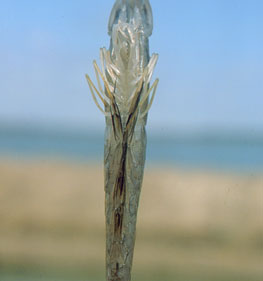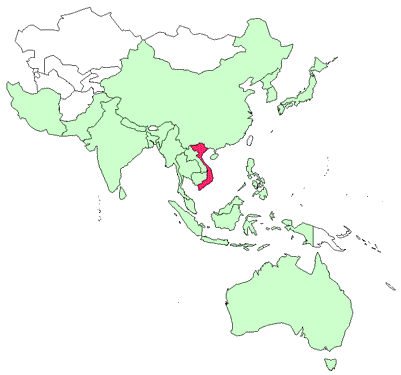Diseases of crustaceans
Bacterial diseases—Necrotising hepatopancreatitis
CLICK ON IMAGE TO ENLARGE

Source: DV Lightner
CLICK ON IMAGE TO ENLARGE

Source: DV Lightner
Signs of disease
Important: animals with disease may show one or more of the signs below, but disease may still be present in the absence of any signs.
Clinical signs of disease in an infected animal
- lethargy
- emaciation
- soft shells
- heavy fouling from external parasites
- black gills
- reduced growth
Gross signs of disease in an infected animal
- digestive gland (hepatopancreas) degenerated - appears pale to white
Disease agent
Necrotising hepatopancreatitis is caused by a species of alpha-proteobacterium that infects the hepatopancreas of prawns, also referred to as NHP bacteria.
Host range
Crustaceans known to be susceptible to the disease:
blue shrimp* (Penaeus stylirostris)
northern brown shrimp* (Penaeus aztecus)
northern white shrimp* (Penaeus setiferus)
white shrimp* (Penaeus vannamei)
yellowleg shrimp* (Penaeus californiensis)
* naturally susceptible
Presence in Asia–Pacific

Necrotising hepatopancreatitis has been officially reported from Vietnam.
Epidemiology
- Necrotising hepatopancreatitis requires lengthy periods of high air temperature (29°–31°C) and elevated salinity (20–40 ppt).
- Mortality can be 90–95% within 30 days of an outbreak.
- Mortalities usually occur midway through the grow-out phase.
- Necrotising hepatopancreatitis appears to be transmitted by direct ingestion of an unidentified carrier (a reservoir host).
- The disease is not transmitted either vertically (from parent to offspring) or through cannibalism.
Differential diagnosis
The differential diagnostic table and the list of similar diseases appearing at the bottom of each disease page refer only to the diseases covered by this field guide. Gross signs observed might well be representative of a wider range of diseases not included here. Therefore, these diagnostic aids should not be read as a guide to a definitive diagnosis, but rather as a tool to help identify the listed diseases that most closely account for the gross signs.
Similar diseases
The clinical signs described and shown here may also be symptomatic of other bacterial or viral infections, or poor water quality in rearing ponds (high ammonia, low oxygen, high and low pH). Further laboratory examination is required for a definitive diagnosis.
Sample collection
Because of uncertainty in differentiating diseases using only gross signs, and because some aquatic animal disease agents might pose a risk to humans, you should not try to collect samples unless you have been trained. Instead, you should phone your national hotline number and report your observations. If samples have to be collected, the agency taking the call will advise you on what you need to do. Local or district fisheries/veterinary authorities could advise you on sampling.
Emergency disease hotline
For your national emergency disease hotline number, see Whom to contact if you suspect a disease.
Further reading
http://www.oie.int/aac/eng/cards/en_diseasecard.htm
http://www.pac.dfo-mpo.gc.ca/sci/shelldis/pages/nechepsp_e.htm
These hyperlinks were correct and functioning at the time of publication.

